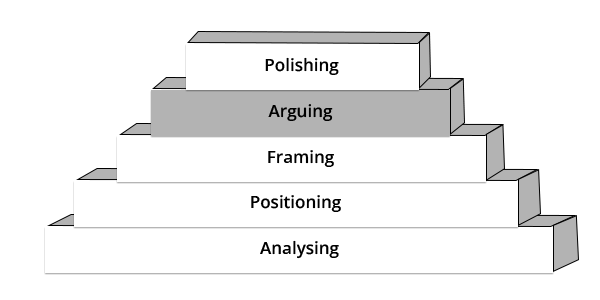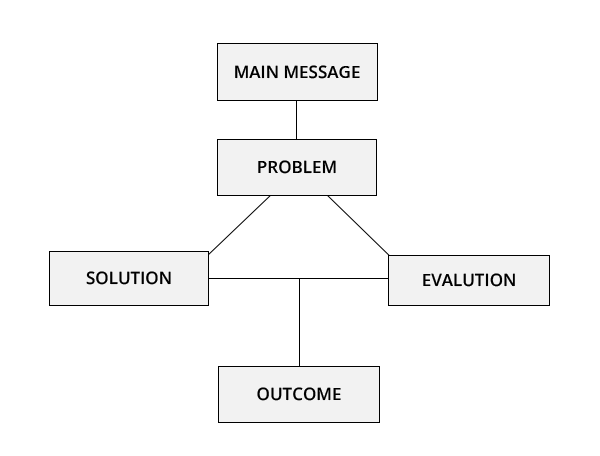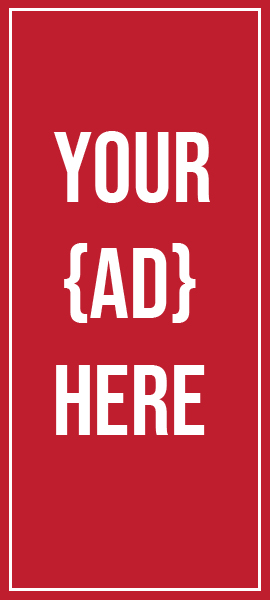
Foundation Concepts
You can make anything by writing.
– C.S.Lewis
Introduction
You can write business reports in a range of formats and for a variety of purposes. Whether you need to report on a project, product analysis, a feasibility study, research findings, or something else, report writing is a skill you will use again and again. So, a business report can be defined as an organized, written statement of facts related to a specific business matter. It helps the interested persons to get insight into the problem and assists in decision-making and problem-solving.
The ability to persuade is a key factor in the success you achieve in persuasive report writing. In this lesson, we will look at three fundamental concepts underlying the approach to persuasive report writing. These are:
- A staged model of the writing process
- The organizational diamond
- The Basic Information Frame
The Writing Process
The first concept in the approach to writing persuasive reports is the model of ‘the writing process, which is based on five stages. First of all, it is important to recognize that even though it may be informal or unconscious and may vary slightly depending on the writing task, you probably already do use a writing process. Thus there are a few important reasons to use a formal writing process:

Reduce anxiety and stress. By knowing that you have a series of separate steps you can follow that break the intimidating task of “WRITING” down into manageable parts, you will feel much less anxiety and struggle in writing.
Increase quality. By focusing on each distinct step individually, you can do each better, increasing the ultimate quality of your final product.
Learn more. Students and other writers often think of writing mainly in terms of producing a product for a reader that shows what you already know or believe. However, writing itself is—or can be, when approached in the right way—and an act of thinking, learning, and discovery for the writer.
Following are the five stages of the writing process and a description of each in more detail.
Polishing
Here you check through the draft, revising for style and accuracy. Revising and editing are the two tasks you undertake to significantly improve your essay. Both are very important elements of the writing process. You may think that a completed first draft means little improvement is needed. However, even experienced writers need to improve their drafts and rely on peers during revising and editing.
Revising and editing allow you to examine two important aspects of your writing separately so that you can give each task your undivided attention.
When you revise, you take a second look at your ideas. You might add, cut, move, or change information in order to make your ideas clearer, more accurate, more interesting, or more convincing.
When you edit, you take a second look at how you expressed your ideas. You add or change words. You fix any problems in grammar, punctuation, and sentence structure. You improve your writing style. You make your essay into a polished, mature piece of writing, the end product of your best efforts.
Arguing
Here you fill in the details of your argument and complete the first draft of the document. An argument can be seen as comprising three parts: the claim, evidence, and the link between the evidence and the claim.
A claim is an expressed opinion or a conclusion that the writer wants to accept.
Evidence provides support for the claim and comes in many forms – data, facts, or conditions that are objectively observable, beliefs or statements generally accepted as true by the recipients, or conclusions previously established. Evidence functions as the foundation for an argument or the grounds on which an argument is based.
The third part of an argument, reasoning, connects the evidence and the claim. Reasoning constructs a logical and persuasive link between the evidence and the claim and authorizes the step we make when we draw a conclusion. The part of the argument containing the reasoning is frequently called an inference. Inferences can be explicit or implicit in an argument.
Framing
Here you write the beginning and ending of your document—you ‘frame’ it.
Positioning
Here you start planning the document by considering your readers, the results you want to achieve, the information you need to provide, and the best arguments to convince them of your position.
Visualizing your audience is a pivotal step in the writing process. Asking the right questions will help you profile your audience. Profiling your audience helps you make a decision about shaping the message. You will discover what kind of message is appropriate, whether you are free to use specialized technical terms, whether you should explain everything, and so on.
Analysing
Here you analyze the case that you are working on. You gather data and understand the problem facing you and what solutions you want to put forward.
Brief check
These are the five steps in the writing process: (1) Polishing (2) Arguing (3) Framing (4) Positioning (5) Analysing
The Organisational Diamond
The second concept in the approach to writing an effective persuasive document is the ‘Organisational Diamond’, which is a document shaped like a diamond. First, think of the whole document as a diamond shape. At the narrow ends, the information is brief, focused, and concise.
From a precise starting point, the topic opens out into a discussion of the case. This development attains a broad focus as it moves through the argument. Then it narrows down again to a precise finishing point.
Like an industrial diamond, your documents must ‘cut’ at the sharp ends. Here is an example.
Purchase
of a replacement
for the external clock at
Kowloon City Stadium
Summary
- 1. The external clock on the main building at Kowloon City Stadium needs replacing. Granada Equipment and Supplies Ltd. are able to install a comparable mechanical replacement for HK$133,000.
The current condition of the clock
- 2. The external clock on the main stadium Administrative Building is slow and unreliable and cannot be repaired. Installed over 30 years ago, it has recently been running out of synchronization with the master clock, due to wear on mechanical parts such as the driving gear. These cannot be replaced since spare parts are obsolete and no longer supported by the manufacturer.
- 3. The clock was originally used by officials, the public, and the press to check the starting times of events. This function is now performed by the event data indicator board which is more conveniently placed facing the main stands. Nevertheless, the clock is a familiar feature of the stadium and is frequently referred to by users of the facilities.
A mechanical replacement
- 4. Granada Equipment and Supplies Ltd. (GES), agents for Templex clock movements, are the leading Hong Kong supplier of tower clocks. Templex clocks are manufactured in West Germany and are supplied with the normal guarantees. They are installed in many public buildings in Hong Kong and appear to have no significant problems in the high humidity.
- 5. The GES 564-2 model (see leaflet attached) is a suitable replacement, being comparable to the existing clock in size and quality. It is compatible with the stadium master clock and can be synchronized with the indicator board. GES are able to offer a wide range of designs, including variations in hands, dials and markers.
- 6. The GES 564-2 model (see leaflet attached) is a suitable replacement, being comparable to the existing clock in size and quality. It is compatible with the stadium master clock and can be synchronized with the indicator board. GES are able to offer a wide range of designs, including variations in hands, dials and markers.
Conclusion
- 7. If we decide to purchase a mechanical replacement for the clock, the 564-2 from GES would provide a functional and attractive replacement at an acceptable cost. We should contact them by 25 July for installation before the start of the new sporting season.
- 8. Please let me know if you want me to proceed further with this.
Brief check
To use this concept, think of structuring information in the shape of a diamond. The summary of the abstract at the beginning and the conclusion at the end each give overview information. The summary prepares the reader for the whole document; the conclusion confirms the findings and their significance.
This structure does two things:
a) It helps the expert reader get an undetailed understanding of the key information in a document. The formula for this is as follows: Read only the Title, Summary/Abstract/Executive summary, Conclusion, and Recommendations.
These sections – together with the section summaries – should form a roadmap that orientates the reader and guides them through the documents. They also give the non-expert reader a means of obtaining an undetailed overview.
(b) It lets non-expert readers obtain an overview of the document by reading these particular sections while avoiding the detail.
The Basic Information Frame
The third concept in the approach to writing an effective persuasive document is the ‘The Basic Information Frame’. Many different kinds of documents can be structured using this basic framework. Look at an example below:

Principles behind the Basic Information Frame
The document starts with a summary sentence or paragraph, which contains your MAIN MESSAGE. While not every document starts in this way, you should see this as the default approach. If you don’t start with your main point you should have a good reason for presenting your position indirectly!
The PROBLEM is the heart of the matter. Here you present some barrier or hindrance to operations, or an opportunity to be addressed. You may need to include some historical information to orient the reader to the problem or the document you are writing. In all cases, however, keep this background as brief as possible. Omit it if possible. Get into your problem analysis quickly.
The SOLUTION slot includes any aspects of your proposed action to address the problem or take advantage of this opportunity, including costs, implementation plan, etc. Here you place your main argument to persuade your reader that your ideas are sound.
The EVALUATION summarises the advantages and results expected from your proposed solution.
The OUTCOME may be in the form of Recommendations, a request for action, a statement of the current situation, or a prediction about the future.
Why put your MAIN MESSAGE at the beginning?
Consider these two approaches to structuring a document.
The direct and indirect approach
Look at these two diagrams:

In the direct approach, the writer puts the MAIN MESSAGE of the document upfront. The reader’s attention is grasped from the beginning. Then, the rest of the document makes sense as the reader is led step by step towards the OUTCOME where there is a clear call to action.
In the indirect approach the writer delays introducing the main point. Instead, the reader is first given background information (possibly in a section titled vaguely Introduction or Background) and then led gradually towards the point which only becomes clear at the end. This is like a narrative approach, where the writer can rely on building up the tension of a story till a climactic conclusion is reached.
Brief check
A direct approach is likely to be more effective. Managers need to know the point right up front. Then they can evaluate your arguments as they move through the body of the document.
Effective openings and closings
The Basic Information Frame helps you to start short documents, such as memos and correspondence, by getting straight to the main point. It can also help you to devise more effective, action-oriented, endings.
A poor example
Here’s a rather weak letter. As you read it, consider what action is being requested.
Dear Mr. Chan
I refer to our purchase order No. 21438 dated April 26, 2003, for a Vancourt Microcopier model 3000, which was installed on May 14. During tests following its installation, your technician discovered that some components had been damaged in transit. He ordered replacements and in a letter dated May 20 informed me that they would be shipped to us on May 27 and that he would return here to install them shortly thereafter.
It is now June 10, and I have neither received the parts nor heard from your technician. I would like to know when the replacement parts will be installed and when we can expect to use the microcopies.
I look forward to receiving your clarification of this matter.
Sincerely
The letter has several flaws:
- It starts with a narrative approach describing the background to the case rather than by stating the MAIN MESSAGE
- The OUTCOME, i.e., the action required of the reader, is ‘buried’ in the middle of the letter
- The ending is an empty ‘complimentary close’
Weak openings and closings
When writing correspondence, many writers find difficulty in framing the opening sentence. There is a temptation to use weak, formal openings such as these.
| Never start with … | For example |
| … a word that ends in -ing | Referring … Replying … |
| … a phrase that ends with the word to | With reference to … In answer to … Pursuant to … |
| … a redundant expression | I am writing … For your information … This is to inform you … The purpose of this letter is to … We have received your letter … Enclosed please find … Attached herewith … |
Weak closing sentences are also an easy, but ineffective, way of finishing off a letter. Though superficially polite, these examples have zero information content.
I look forward to hearing from you at your earliest convenience.
Thanking you in advance for your kind cooperation.
A technique for creating effective openings
To quickly draft an opening summary sentence, imagine that you are talking to your reader and saying:
I want to tell you that …
Write the sentence down. Make sure it expresses your MAIN MESSAGE. You’ll find that it makes a good opener.
Effective closings
The Basic Information Frame helps to define a strong ending for correspondence.
In the information-oriented letter, your OUTCOME will focus on the next stages in the project, upcoming events, or predicted results of actions that have been taken.
I have received approval from the landlord to perform the repairs and a crew was sent in on April 23. They should complete their work by May 31.
Yours sincerely,
In the action-oriented letter, specify the action you expect.
If this schedule is acceptable, please fax me so that I can send in the repair crew.
Yours sincerely,
NOTE: Exactly the same techniques can be used to write the ending to information-oriented or action-oriented memos.
A revised example
This letter is better. It closely follows the Basic Information Frame.
- MAIN MESSAGE
- PROBLEM
- EVALUATION
- OUTCOME
Improved example
Dear Mr. Chan
I refer to our purchase order No. 21438 dated April 26, 2003, for a Vancourt Microcopier model 3000, which was installed on May 14. During tests following its installation, your technician discovered that some components had been damaged in transit. He ordered replacements and in a letter dated May 20 informed me that they would be shipped to us on May 27 and that he would return here to install them shortly thereafter.
It is now June 10, and I have neither received the parts nor heard from your technician. I would like to know when the replacement parts will be installed and when we can expect to use the microcopies.
I look forward to receiving your clarification of this matter.
Sincerely





